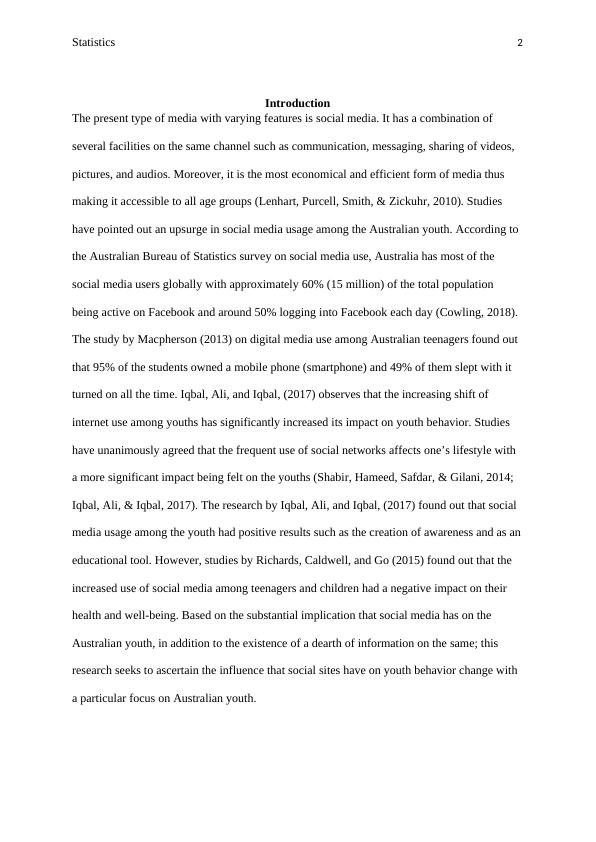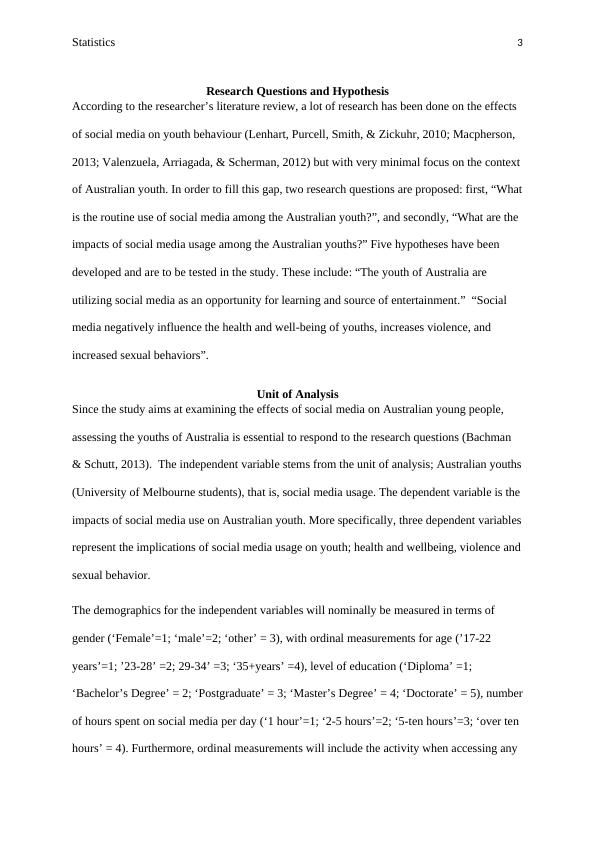Impact of Social Media on Youth Behaviour Change: A Case Study of University of Melbourne Students
Assessment 2 - Research Question and Sampling Strategy for the course 3012CCJ Social Science Research Methods
7 Pages1748 Words59 Views
Added on 2023-04-22
About This Document
This study examines the impacts of social media on behavior change of Australian youth with a particular focus on University of Melbourne students. The study aims to fill the gap in research on the effects of social media on Australian youth behavior.
Impact of Social Media on Youth Behaviour Change: A Case Study of University of Melbourne Students
Assessment 2 - Research Question and Sampling Strategy for the course 3012CCJ Social Science Research Methods
Added on 2023-04-22
ShareRelated Documents
End of preview
Want to access all the pages? Upload your documents or become a member.
Marketing Research - Digital marketing
|4
|713
|17
Social media usage among college students in Australia
|17
|3144
|431
The Effects of Social Media on Adolescent Health and Well-Being
|10
|1982
|374
Cyberbullying Policy Brief - State of Victoria
|12
|2713
|192
Should Parents Limit Teenagers’ Use of Social Media
|9
|2894
|69
Effects of Social Media on Teenagers' Self-Esteem
|14
|2805
|221



